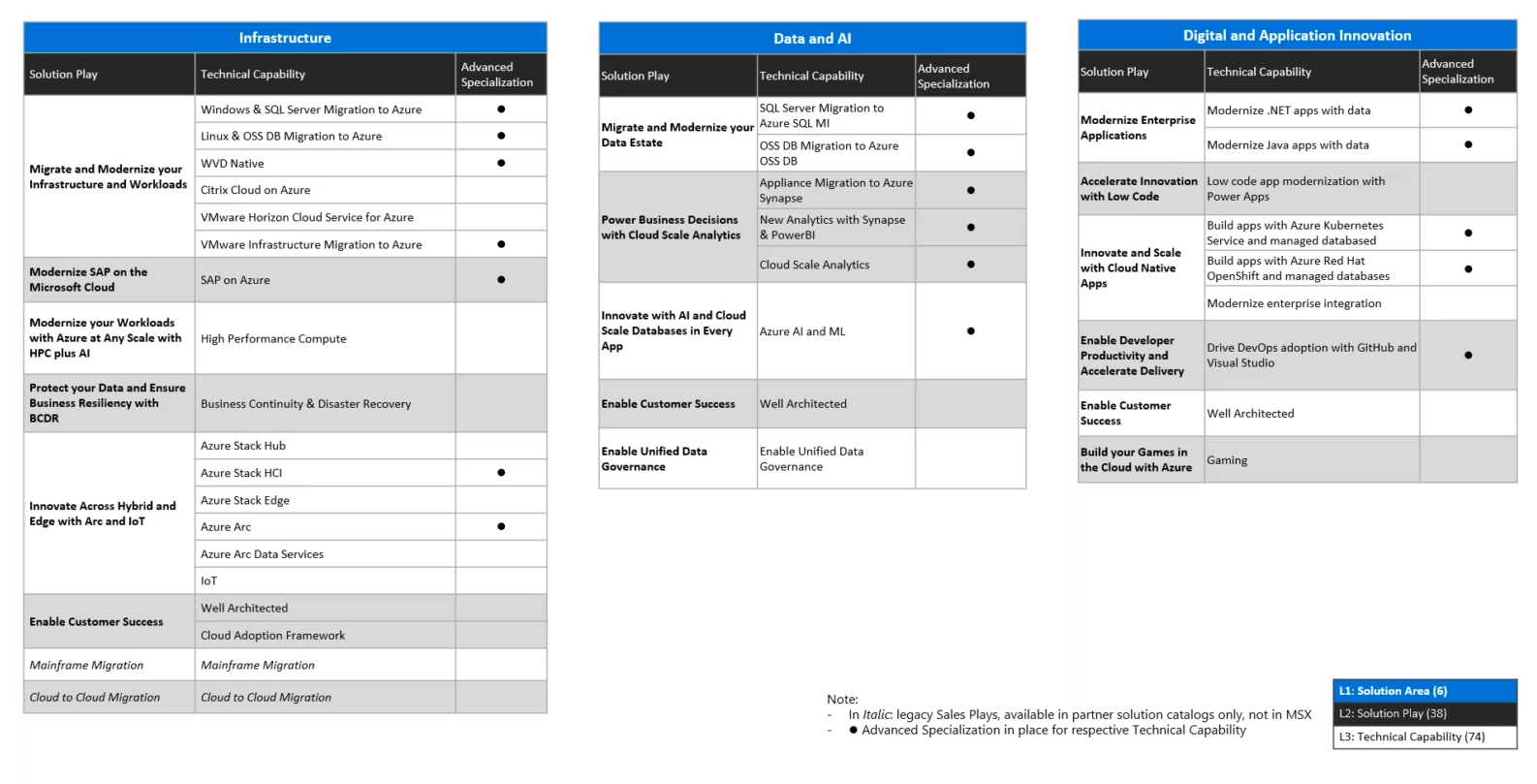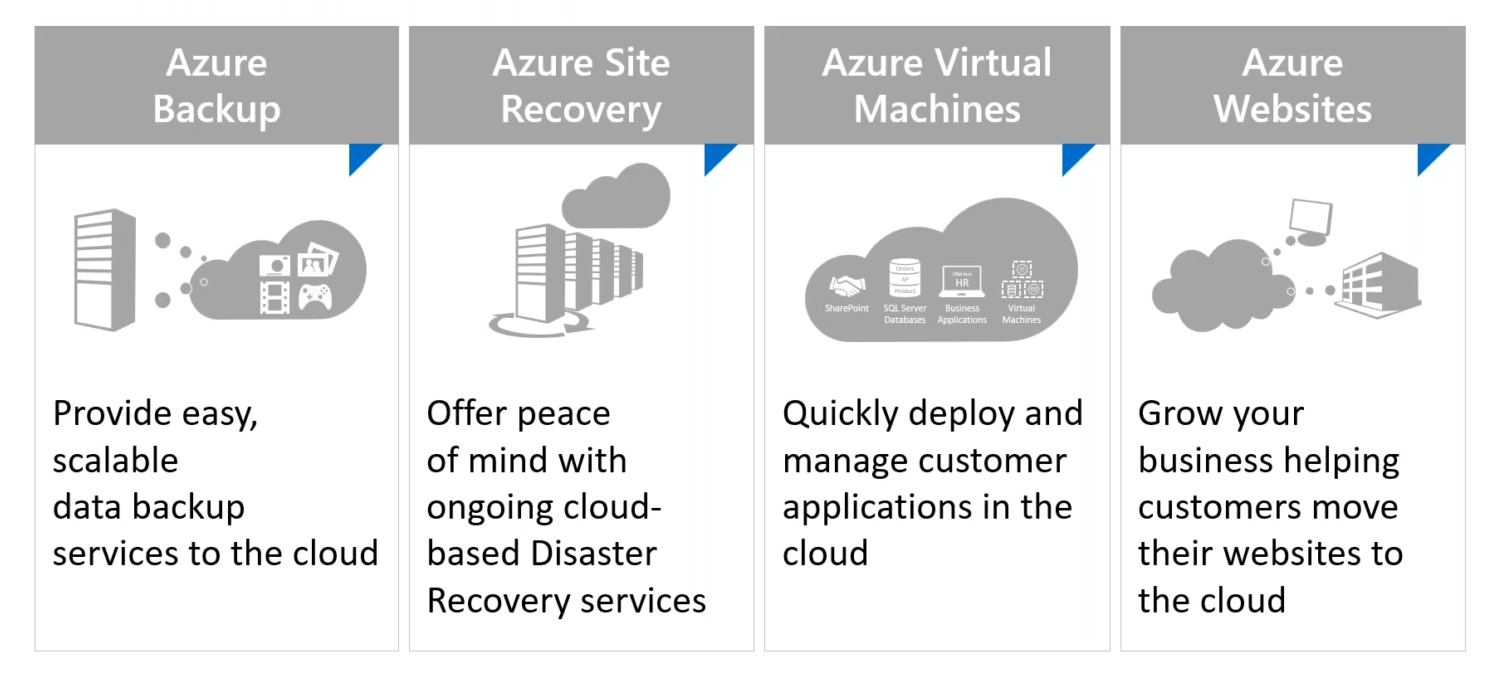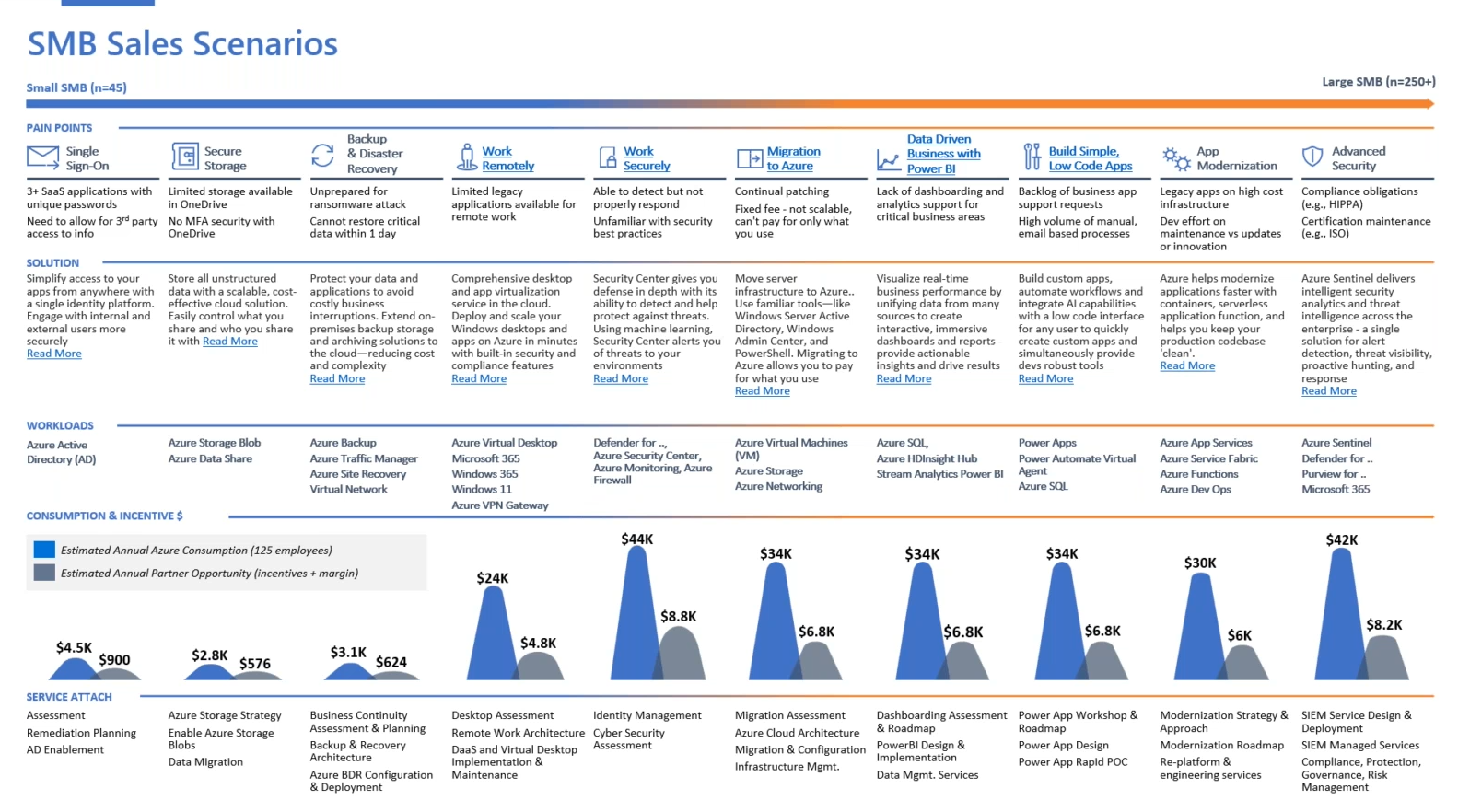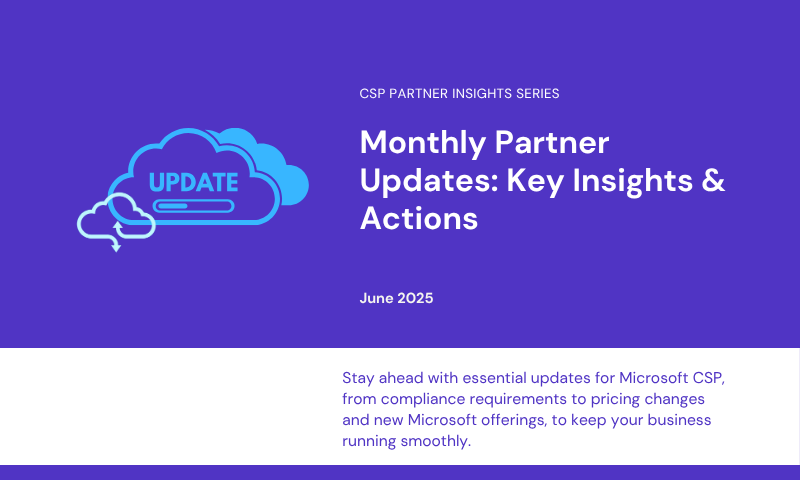Exploring Microsoft Azure capabilities and opportunities
1 July, 2022
Now that you have done a great job in onboarding and migrating your customers to the Cloud with Microsoft 365 (specifically in productivity and security), what’s next?
The answer is simple, Microsoft Azure.
At its core, Microsoft Azure is a public cloud computing platform – with solutions including Infrastructure as a Service (IaaS), Platform as a Service (PaaS), and Software as a Service (SaaS) that can be used for services such as analytics, virtual computing, storage, networking, and much more. It can also be used to replace or supplement your on-premise servers.
If you are starting to dip your toes into Azure, it can seem rather intimidating with the extensive array of capabilities and applications the platform offers – there’s more than 200 products and cloud services, divided into 18 categories, Azure offers three core areas of functionality: Virtual machines, cloud services, and app services.
While there are many places you could consider as the starting point in your Azure journey, where you want to start is where your customers’ needs are today.
Three areas where you can target effective Azure conversations with your customers:
1. Infrastructure
Migrate and modernise infrastructures and workloads – simple conversation about migrating Windows server or SQL server workloads to the Cloud, or keeping those workloads that they may have on premise, continue to run them on premise but with Azure offering the benefits of a hybrid setup.
2. Data and AI
Migrate and modernise data estate – use the power of Azure to draw on and merge data sets to give informative insights to clients no matter where the data source sits on.
3. Digital and Application Innovation
Low code application development using things like containerisation to build rapidly scalable solutions, architecture frame work developments, or gaming applications.

Source: Blueprint of Solutions Taxanomy presented by Philip Meyer during the ‘’Discover Azure capabilities and opportunities” webinar. June, 2022.
Ultimately, what your customers are looking for is a solution to a problem; like wanting secure storage, backup and disaster recovery, ways to migrate to the Cloud, or solutions that allow them to work remotely and securely.
In a recent webinar, Philip Meyer, Partner Technology Strategist at Microsoft, shared a series of SMB sales scenarios with pain points, specific solutions and workloads to engage. In this deck, each pain point has a discussion point with a conversation guide on the technologies that will enable you to address those particular pain points.
For example, if secure identity and access is your pain point, you can access, and protect your apps and data from anywhere with a single identity platform using Azure Active Directory (AD), or if you have fixed costs, can’t cost optimise your infrastructure, and can’t scale, moving your server infrastructure to Azure allows you to only pay for what you want to use, using tools like Windows Server Active Directory, Windows Admin Center, and PowerShell.
Pro Tip: Change the conversations from a product discussion to a pain point or requirement discussion.
Azure has various solutions that customers might be seeking for doing application development, for supporting AI needs, hybrid cloud solutions, security and government, or IoT. These solutions come with different architecture and blue prints to make it easy to build out the solutions with all the services that sit inside Azure.
The deck also shows what Microsoft estimates to be the opportunity for you to make by providing these transactional elements, and the margins and incentives you can derive by applying those to your customers. In instances where your clients already have Azure under a direct agreement, Microsoft will pay the incentives to you directly under a process called Partner Admin Link (PAL). PAL is a method used by Microsoft to recognise partners who are helping to drive Azure consumption. It consists of associating a Microsoft partner’s ID number to your Azure tenant.
Many channel partners could well benefit by starting out in these four key server scenarios:
1. Azure Backup
A low-cost cloud backup for customers who have existing servers, no VM or site to site VPN required, relies on internet connection.
2. Azure Site Recovery
Keep your business doing business even during major IT outages. Azure Site Recovery offers ease of deployment, cost effectiveness, and dependability. Deploy replication, failover, and recovery processes through Site Recovery to help keep your applications running during planned and unplanned outages.
Site Recovery is a native disaster recovery as a service (DRaaS), and Microsoft has been recognised as a leader in DRaaS based on completeness of vision and ability to execute by Gartner in the 2019 Magic Quadrant for Disaster Recovery as a Service.
3. Azure Virtual Machines
For customers who are willing to take the journey to cloud – migrate their mission-critical workloads to Azure infrastructure and run SQL Server, SAP, Oracle software, or other high-performance computing applications on Azure Virtual Machines.
4. Azure Websites
There are hundreds of tools that sit inside Azure to assist with the creation of websites i.e. WordPress, commerce tools, photo galleries. Start with Power pages, which is part of the Power platform business applications for low code development of websites.

Desktop as a Service
Another area of Azure that can help to address specific business needs is desktop virtualisation. In the first 2 weeks of the pandemic lockdown across the nation, Microsoft had over 20,000 virtual desktops activated on Azure. Since then, we’ve seen tremendous continuation in the demand and deployment of the Azure Desktop environment to support people working in a hybrid environment.
Azure Virtual Desktop provides the familiarity and compatibility of Windows 11 with scalable multi-session experience for end users that save costs by using existing eligible Windows licences. You can manage the end-to-end Azure Virtual Desktop deployment alongside other Azure services within the Azure portal.
The work secure remoteness desktop pain point conversation gives you a deeper insight to how you can target the guidance aiming at the SMBs, customers who have RDS environment or those with a BYO mentality. This is the customer challenge of not able to access desktops trapped during the lockdown, they want better ways to collaborate, or where security is too expensive for them.
Pro tip: Use conversation starters for DaaS like ‘Do your employees need access to desktops on the go?’; ‘Would the employee experience be better if any PC had their desktop accessible with a single click?’
Knowing what’s driving your customers to migrate to the cloud, can present opportunities for you to set the Azure conversation.
The common compelling triggers are:
- Data centre lease renewal, capacity crisis
- Hardware/software refresh
- Getting solutions to market faster, and be more competitive
Pro tip: Very eminent now, and a viable trigger is when Windows Server 2012 goes end of service – governed or commercial customers who have regulatory monitoring responsibilities, will be under pressure to either sign up for extended security update at some significant costs OR they can work with you to migrate those workloads into an Azure environment, and enjoy extended security updates.
Pro tip: Simply by turning on Azure’s advance capabilities to extend new solutions like AI, ML and data analysis can provide greater insights, capabilities, scalability, and business sustainability to your customers, which are not available in traditional data centre environments.
There’s no arguing that the future of computing is in the Cloud. Microsoft Azure is full of cloud-computing potential that you can utilise in almost any way imaginable. Aside from being cost-effective, has no down-time, unmatched security, and work at your own pace, you can use the power of Azure to be more effective, efficient, and competitive, is why Microsoft Azure is appealing to many organisations.
Source and credit: Some content in this article is extracted from ‘Discover Azure Capabilities and Opportunities‘ webinar held on 21 June 2022.




Leave A Comment